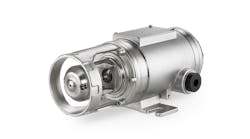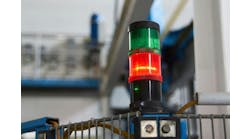As data scientists putter around with artificial intelligence (AI) and operator advisory systems, one might worry that the ability of (especially young) operators to develop and maintain mental models of complex processes that might suffer. Even a couple decades ago, we can remember laments of advanced control users—that operators forgot how to run the crude unit as they came to rely on the model predictive control (MPC) whose largely beneficial and reliable control relieved operators of thinking and “driving.” “How much should I increase or decrease the side draw when the kero endpoint is high?” It might not have a simple answer and can be tough if you rarely take the MPC-manipulated variables out of cascade—like a motorist who’s relied on Uber and self-driving cars trying to get their Subaru on the expressway at morning rush hour.
As the reliability department succeeds in extending the shutdown interval to many months or years, only the most experienced operators will be at ease when it’s time to start the entire plant back up. There can be many instances where progress is delayed because, for example, no one on shift remembered the interlock preventing them from starting the compressor motor. There might be waste or inefficiency because boilers, heaters and steam systems are fired up, but on-hold because turbines and exchangers aren’t ready. When procedures are slowed by fearful novices, they can span multiple shifts, increasing opportunities for miscommunication, missed steps and repetition of steps already completed.
If you had the will to undertake the work, could such situations can be improved and expedited by your measurement and control system? It turns out, many enterprises are doing so.
It’s called procedure automation, and like alarm management, it requires more from us in the way of discipline and tenacity—force of will as well as intellect. The recently published ISA 106 TR106.00.02 describes work processes for a structured deployment of such procedures. Starting up a complex process might be among the most beneficial procedures to automate, but it may pay to gain practice and skill with simpler tasks.
For example, can you involve your automation system task like preparing a pump for maintenance? It might be challenging from the standpoint of the sensors available to aid validating the progress of the task, which is one of the aspects of procedure automation that can be most beneficial. But thinking through how such a rudimentary procedure might be automated can provide valuable practice for making your more complex endeavors effective.
Instead of interacting with a paper procedure (or from memory), the operator documents progress through the procedure by interactions with the control system. “Spare pump unblocked and online” might be validated by the motor status and the discharge pressure or flow. If warranted, wireless clamp-on sensors could be employed for progress feedback—easy and inexpensive once you have wireless infrastructure. Then, other aspects of the procedure, say, “pump to be maintained is de-energized,” can be similarly verified by feedback from switchgear or sensors (not a substitute for electrical verification, however).
Justifying whether such sensors are warranted can frame practices for future procedure automation. Do you need limit switches to indicate block valve positions? It might not make sense for everyday pump preventive maintenance, but like any process, the justification for instruments will rest on the risk and the consequences of getting it wrong.
Experienced practitioners of procedure automation are leading the effort to codify recommendations and best practices, and the ISA 106 committee’s technical reports are a worthwhile read for anyone inspired to deploy this evolving strategy, aiming to ensure our hazardous processes are safer, efficient and reliable despite the frequency and experience with complex procedures.






